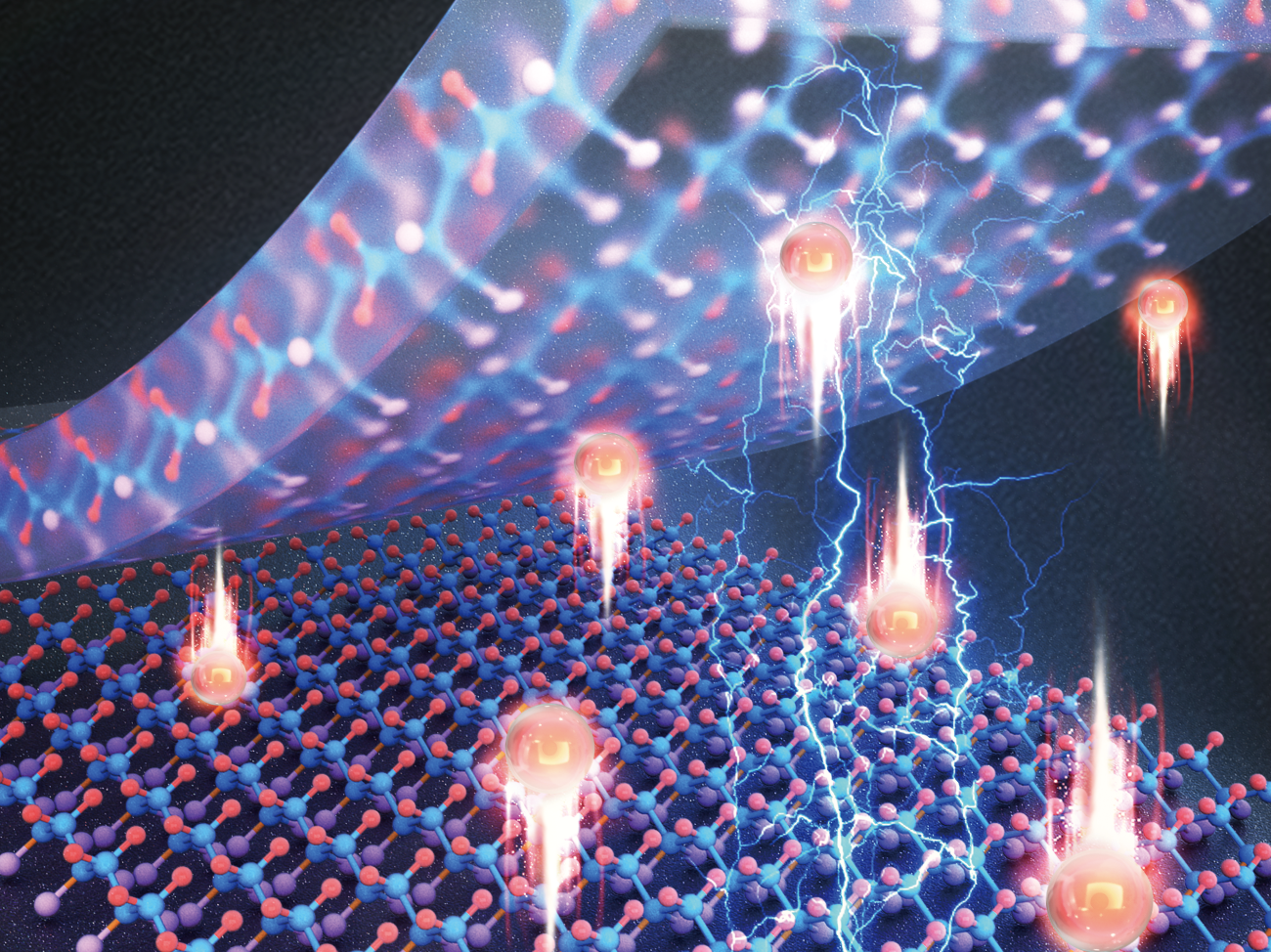According to a group of Penn State international researchers, an innovative ferroelectric polymer adept at converting electrical energy into mechanical strain holds promise as a high-performance motion controller or “actuator”. This polymer has significant potential for applications in medical devices, advanced robotics, and precise positioning systems.
 Actuation of ferroelectric polymers driven by Joule heating. Image Credit: Qing Wang
Actuation of ferroelectric polymers driven by Joule heating. Image Credit: Qing Wang
An actuator is any substance that will change or deform when an external force, such as electrical energy, is supplied. Mechanical strain, or how a material changes shape when force is applied, is an important attribute of an actuator.
These actuator materials have often been stiff, but soft actuators, like ferroelectric polymers, have more flexibility and environmental adaptation.
The study showed that ferroelectric polymer nanocomposites have the ability to overcome the drawbacks of conventional piezoelectric polymer composites, opening up a new path for the creation of soft actuators with improved mechanical energy density and strain performance.
Researchers studying robotics are particularly interested in soft actuators because of their durability, flexibility, and power.
Potentially we can now have a type of soft robotics that we refer to as artificial muscle. This would enable us to have soft matter that can carry a high load in addition to a large strain. So that material would then be more of a mimic of human muscle, one that is close to human muscle.
Qing Wang, Study Co-Corresponding Author and Professor, Materials Science and Engineering, The Pennsylvania State University
These materials can entirely change their properties, such as shape, due to strain experienced during the phase transition, in this case, the transfer of electrical energy to mechanical energy, making them suitable as actuators.
A ferroelectric actuator is frequently used in inkjet printers, where electrical charge modifies the actuator’s structure to accurately control the small nozzles that deposit ink on the paper to create text and images.
While many ferroelectric materials are ceramics, they can also be polymers, a class of organic and inorganic substances formed of numerous similar units joined together. DNA and nylon are two examples of polymers.
The fact that ferroelectric polymers exhibit a significant percentage of the electric-field-induced strain required for actuation is a benefit. This strain is significantly greater than that produced by other ferroelectric actuator materials, such as ceramics.
Researchers in the emerging field of soft robotics, which involves the creation of robots with flexible parts and electronics, are particularly interested in ferroelectric materials because of this attribute as well as their high level of flexibility, low weight, and lower cost when compared to other ferroelectric materials.
Wang added, “In this study we proposed solutions to two major challenges in the soft material actuation field. One is how to improve the force of soft materials. We know soft actuation materials that are polymers have the largest strain, but they generate much less force compared to piezoelectric ceramics.”
A ferroelectric polymer actuator often requires an extremely powerful driving field, which is a force that induces a change in the system, such as the change in the form of an actuator.
This is the second challenge. In this instance, a strong driving field is essential to cause the polymer to change shape and undergo the requisite ferroelectric reaction to function as an actuator.
Developing a percolative ferroelectric polymer nanocomposite—a kind of microscopic sticker bonded to the polymer—was suggested as a way to increase the performance of ferroelectric polymers.
The researchers developed a network of connecting poles within the polymer polyvinylidene fluoride by adding nanoparticles to this particular type of polymer.
With this network, a ferroelectric phase transition could be produced at much lower electric fields than would otherwise be necessary. This was accomplished utilizing an electro-thermal technique based on Joule heating, which happens when an electric current flows through a conductor and generates heat.
Less than 10% of the typical electric field strength needed for ferroelectric phase change was needed when the phase transition in the nanocomposite polymer was induced by Joule heating.
“Typically, this strain and force in ferroelectric materials are correlated with each other, in an inverse relationship. Now we can integrate them together into one material, and we developed a new approach to drive it using the Joule heating. Since the driving field is going to be much lower, less than 10%, this is why this new material can be used for many applications that require a low driving field to be effective, such as medical devices, optical devices, and soft robotics,” Wang further added.
Yao Zhou, a postdoctoral scholar in materials science and engineering; Tiannan Yang, an assistant research professor with the Materials Research Institute; Xin Chen, a postdoctoral researcher in materials science and engineering; Li Li, a research assistant in materials science and engineering; Zhubing Han, a graduate research assistant in materials science and engineering; Ke Wang, an associate research professor with the Materials Research Institute; and Long-Qing Chen, Hamer Professor of Materials Science and Engineering.
From North Carolina State University, other researchers in the study include Hancheng Qin, a graduate research assistant in physics; Bing Zhang, a graduate student in physics; Wenchang Lu, a research professor in physics; and Jerry Bernholc, Drexel Professor in Physics. From Huazhong University of Science and Technology in Wuhan, China, other researchers in the study include co-corresponding author Yang Liu, a former postdoctoral scholar in materials science and engineering at Penn State, now a professor of materials science and engineering are the other researchers who took part in the study.
The United States Department of Energy contributed to the study’s funding.
Journal Reference:
Liu, Y., et al. (2023) Electro-thermal actuation in percolative ferroelectric polymer nanocomposites. Nature Materials. doi:10.1038/s41563-023-01564-7.